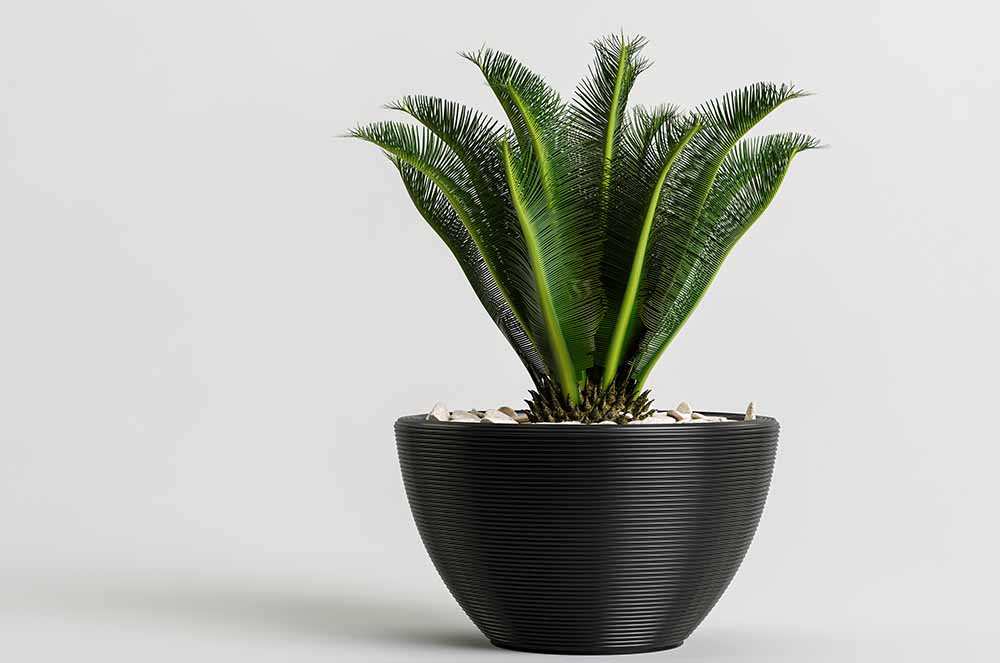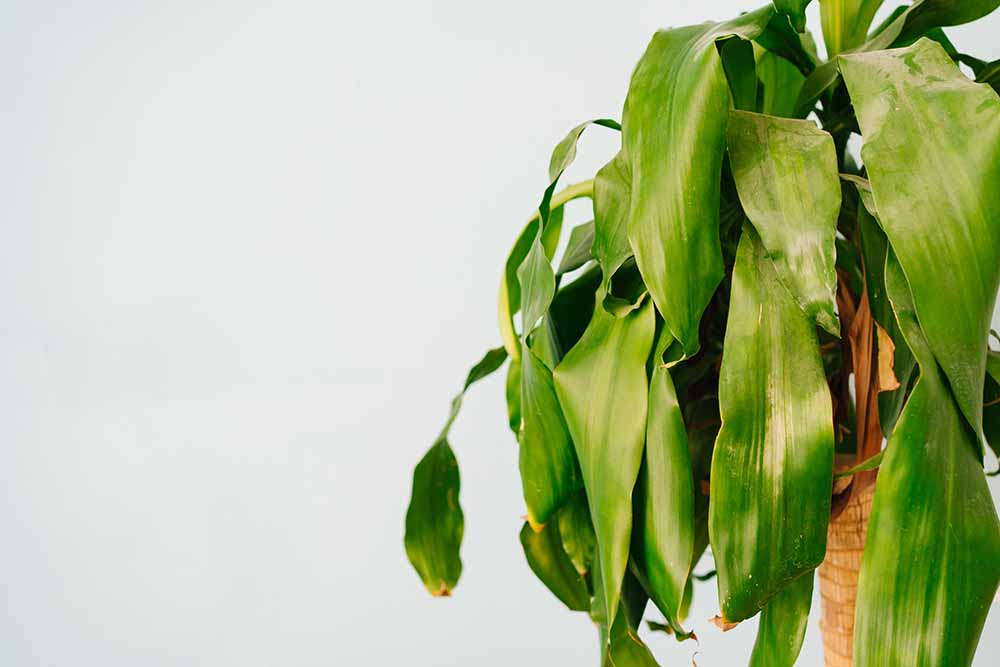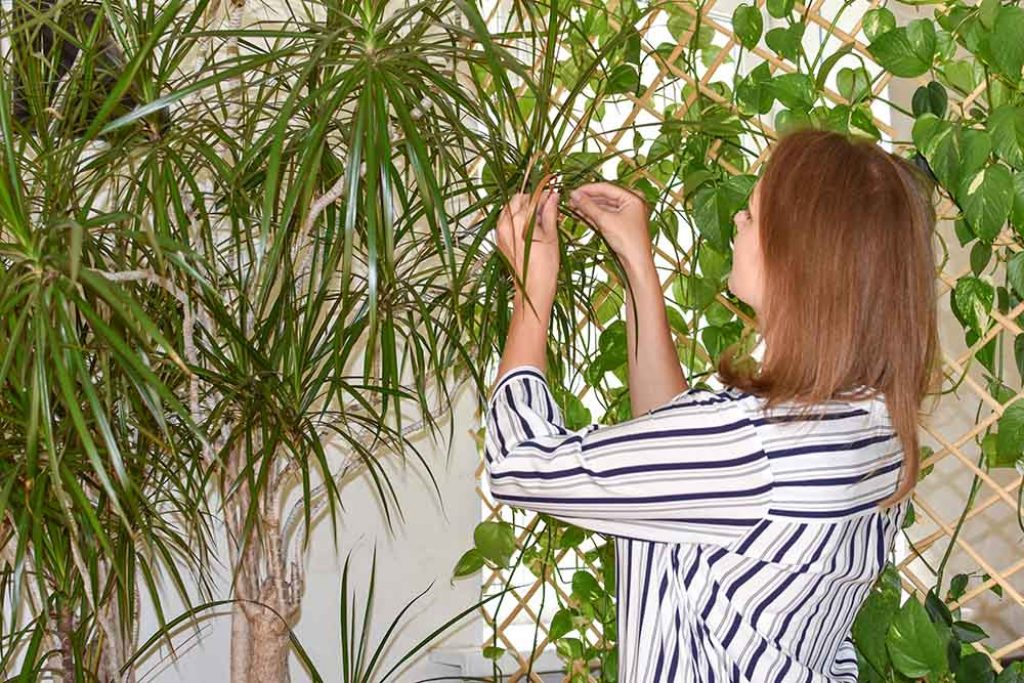Indoor palm plant identification – recognize indoor palms
Palm trees are among the most popular indoor plants. Their perfect fan-shaped or feathery leaves evoke a Mediterranean atmosphere in every room. However, contrary to popular belief, not all palms are sun lovers, and each species has slightly different needs for light and water.
That is why it is essential to know which palm you have. It is necessary to be able to make Indoor palm plant identification – recognize indoor palm. Despite the great variety, there are more than 2,000 subspecies of palms, and it is relatively easy to identify the type of palm you have in your space.
All this information is crucial so you know how to grow your palm tree.

Palm tree varieties
Palm identification criteria include leaf shape, height, and trunk appearance. The recognizable form usually identifies the palm leaf species (that is, the leaves). In general, palm leaves are either pinnate (feather-like leaves) or palmate (fan-like leaves).
Another way to recognize the type of palm tree is the shape of the trunk. Some tallest types of palms have long, slender single boxes, and dwarf varieties tend to have short and plump bins. Some smaller palm species may have clustered trunks with 3 or 4 short trunks growing together from a joint base. There are also dwarf palms that have bushy pinnate leaves that grow out of the ground and no trunk at all.
You can also recognize the types of palm trees by the appearance of the trunk. Some tall palms have smooth, slender trunks. Depending on the species, these trees can have a ringed or gnarled appearance and a gray-brown color. Some species have boxes covered with fibers or scales that make the trunk appear hairy or prickly.
Small species of palm trees
Most people who want to grow palm trees in the backyard look for small or miniature species. Usually, tiny palm species are defined by a height of less than 3.6 m. Within the category of small or dwarf palms, there are two sub-categories: bush palm and small palm.
Here are some of the most common small, dwarf, and bushy palms.
Pygmy Palm
The pygmy palm is a type of small palm with a spiny trunk. As the name suggests, the pygmy date palm is small, and this species does not grow taller than 3 meters. You can recognize a small palm tree by its single stem with long bushy leaves about 1 m long.
This species of palm is the perfect ornamental tree in subtropical landscaped gardens. The curled and drooping leaves of the pygmy date are large and translucent, almost hiding the spiky stem. These palms also do well in pots.
Although pygmy palms produce dates, the fruit is generally not as tasty as the dates that grow on larger (sub)species.
Palm Pindo
The Pindo palm is classified as a slow-growing, cold-resistant, and small variety of palm. It is perfect for urban environments.
Although mature palms can grow up to 6 meters tall, they are a slow-growing type of palm, which means they are suitable for gardens where small palm trees fit best.
These short palms thrive in full sun or shade and grow successfully in various soil types. The fruit of the palm is light orange to brown and is used to make jelly – hence the name “jelly palm.” It is desirable when it blooms with red, yellow, or white flowers.
The Triangle Palm
The Triangle Palm has pinnate leaves that grow from a single trunk, and this palm belongs to the category of small and medium-sized palms. The Triangle palm is recognized by its long, pinnate leaves growing up to 2.5 m in length. An interesting fact about the fins is that they are set at an angle of 120°, giving the leaves a triangular shape in cross-section.
Mediterranean Dwarf Palm
The Mediterranean dwarf palm has a small trunk and is low enough to suit many gardens.
It is also called Mediterranean palm. This species has several clumped trunks that create the illusion of a bush. In a warm climate, this small type of palm grows between 2 and 5 m in height.
Palm leaves are light green to silver-green and grow in the shape of a fan. The Mediterranean Dwarf Palm is prized for its ornamental value and ability to withstand temperatures as low as -12° C. The elegant palm can give gardens a tropical look, even if you live in a temperate climate zone.
Mazari Palm
The Mazari palm can withstand low temperatures and is more like a bush than a tree. Palma Mazari. It is native to southwest Asia and has fan-like leaves. They grow on groups of stems, and the fan-shaped leaves can be 30 to 120 cm long.
Apart from the striking appearance of the leaves, another attractive characteristic of the palm tree is its color. The leaves are silver-green or silver-blue, with a pointed appearance.
Like other temperature-tolerant palms, Mazari palms need hot summers to grow well. However, this species also tolerates low temperatures up to -12°C.
Magnificent Dwarf Palm
The magnificent dwarf palm is common indoors and outdoors due to its miniature size.
One of the most popular short palms for gardens is the Majestic Dwarf Palm. That is a palm tree with a single trunk and dark green pinnate leaves. The box is slender and only 3 to 7 cm thick, while the height rarely exceeds 2.4 m.
The sizeable broad arching leaves look magnificent as the centerpiece of any subtropical ornamental garden. The light green leaves can grow up to 100 cm and have up to 100 leaflets along the stem. The contrast between the thin tree and the broad crown of leaves beautifies every garden. You can also grow this palm tree in pots.
Christmas Palm Tree
The Christmas palm is the perfect choice if you are looking for a miniature type of palm for the yard. This ornamental palm is short compared to other tall coconut or date palms. Some findings show that the Christmas palm tree is one of the planet’s most popular ornamental palm species.
This species does not grow higher than 7.6 m. However, some shorter varieties only grow up to 4.5 m. The palm’s large pinnate leaves curl from the top of the stem.
Palm in a bottle
A small ornamental palm tree with a short thick trunk. It got its name from the shape of the tree. The distinguishing characteristic of this type of palm tree is the enlarged trunk, which appears to be thickened at the base. That helps distinguish this type of palm from the spindly palm that swells amid a fat box.
There are 3 or 4 substantial palm leaves at the top of the 3-meter-high trunk. At maturity, those pinnate leaves can grow up to 3.6 m.

Common indoor house plant
If you decide to grow plants at home but do not know which species to start with, we will try to help you choose a green friend for you.
First, determine where in the room you can place the plant. Do you have a board on the window? How well-lit is the space? Where are the windows oriented (south, north, west, or east)? That is, think about the conditions in which your plant – the palm tree – will grow.
Suppose you are interested in a particular species. In that case, you must be able to provide conditions in which this plant will grow well.
But before you decide, think about the following: do you like how they look? Do you want a green or a blooming palm tree? If you have made the final decision, you can start preparing the place for the plant and choosing the pot in which you will plant it.

Source: freepik.com
Miniature palm tree
As with other plants and trees, palm trees can also be in the “bonsai” format – that is, miniature. On this occasion, we will present to you some of the most popular ones:
Miniature Chusan Palm Tree
The miniature chusan palm is a low palm native to the Himalayas. Due to its unique appearance, it is a unique species. The tree is overgrown with threads, but the leaves are very stiff, small, basically undivided, green-blue in color, with whitish lines around the edge that give it a “frozen” appearance. Due to its compact shape, it is highly resistant to wind and even strong impacts.
After 3-4 years, it starts to form a tree, it grows 30-40 cm per year, so in 10 years, you can already have a palm tree of maximum size. It is resistant to low temperatures (up to -18°C), and suitable for sunny and shady places.
Robellini Palm
The exotic palm belongs to one of my favorite indoor plants, and it is known by the names rebelling palm, miniature date palm, and dwarf date palm. This palm tree can be an exciting decoration for any home interior and, in warmer regions, the home’s exterior.
Phoenix robellini is the most miniature palm of the Phoenix palm family. It originates from Asia, southern China, Laos, and Vietnam, growing in wetter places and often along riverbeds.
In its natural habitat, the robellini palm grows in a bushy form. Several trees grow from the roots, usually 3 to 4. It can reach a height of up to 10 m, and when it is grown as an indoor plant, it is usually no more than 3 meters.
The trunk of the robellini palm is thin and slender. The leaves are delicate, flexible, dark green in color, up to 1.2 m long, and have spines. The flowers of the robellini palm are small, yellowish, and collected in an inflorescence. The fruit is edible, resembling tiny, thin, fleshy dates.
- Cat Palm Tree
The cat palm is a beautiful, fluffy little palm that you can grow as an ornamental, backdrop, or low hedge. The cat palm resembles the areca palm, except that the leaf stems (petioles) are green, while the areca is golden yellow.
This smaller palm works in places where areca would be too big. The cat palm isn’t a tree at all… it’s a stunted palm tree without any trunk, just a thick mass of stems covered in feathery leaves.
This palm grows only from 2 to 3 meters and has a rounded shape. It grows slowly and is resistant to intense sun. It tolerates shady places, which are recommended for growing this type of palm tree.

Source: freepik.com
House plant identification by leaf shape
To identify a plant, you must recognize characteristics such as size, shape, leaf shape, flower color, or scent. You can then associate those characteristics with a name. Accurate identification means you can understand how the plant grows and its care.
Since plants bear flowers for only part of the year, identifying the leaves is often more helpful. Other plant identification tips should be mentioned on how to recognize leaves. Look at the shape of the leaf when identifying flowers by leaves. The shape of the leaf can be round, oval or oblong, spear-shaped, or elliptical.
The vein pattern on a leaf can also help you figure out the type of plant you’re dealing with. Are the veins parallel? Do they look more like a web? Are the veins prominent?
Leaf thickness is another way to identify plants. Is the leaf tender or leathery? Another important clue can be the smell of leaves. When you crush or stroke a leaf, what does it smell like?
If you take the time to find these leaf characteristics, you’ll be well to identify the plant you’re looking at. The more information you have about the leaf, the more likely you will correctly identify it.


